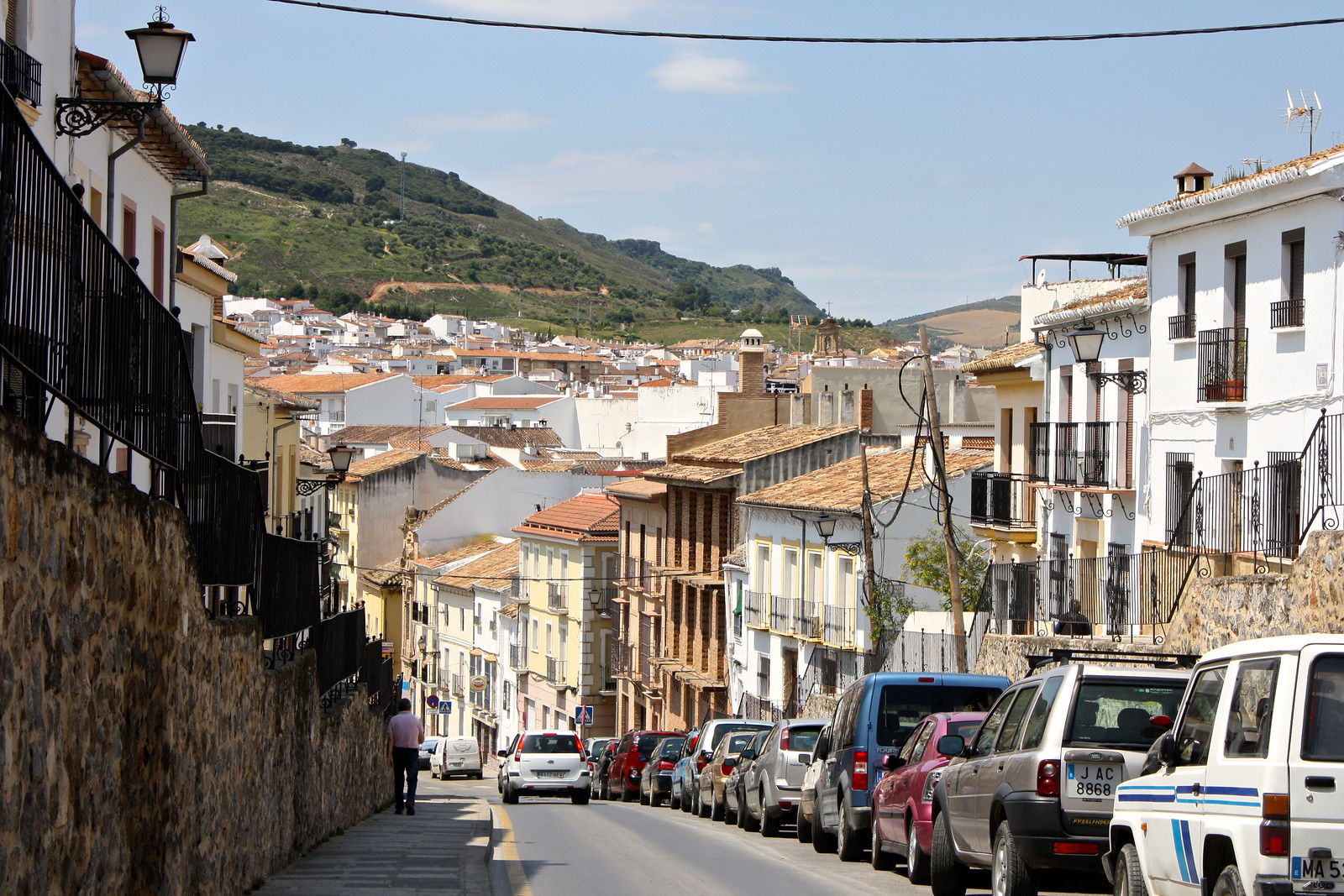Photo Post: Antequera, Deep in the Heart of Southern Spain
 |
| Peña de los Enamorados |
Antequera—an hour north of the Mediterranean metropolis of Málaga—is a mid-sized town smack dab in the middle of Andalucía. I came here for a daytrip around this time last year en route from being a beach bum in Málaga to taking in the beauty of the Alhambra in springtime. Since I had to catch the seven-o’-clock bus from Málaga, I had to dash from my hostel to the bus station without sitting down for breakfast. That ended up not being a problem, however, because I got to try a typical local treat to start off the day: molletes de Antequera. I first learned about these large, round, spongy bread rolls thanks to an article by Lauren of Spanish Sabores that she wrote before I left. Slathering these toasted molletes with grated tomato, salt, and olive oil, I chowed down and slowly woke up, sipping a café con leche in between bites.
 |
| Ceiling of the Church of Santa María |
The city of Antequera has pretty, whitewashed streets, a handful of centuries-old churches, and a warm, inviting atmosphere just like you would expect from any village in Andalucía—I even walked by some older men informally singing flamenco on a streetside café terrace later in the day. But due to its heritage dating back to Roman times (when it was called Antikaria), Antequera has two major monuments to the south of town. The huge Collegiate Church of Santa María la Mayor is the main church in town and is one of the earliest examples of Renaissance architecture in all of Spain. The wooden ceiling inside is a Mudéjar wonder that will leave you dazzled.
The Alcazaba is, as its Arabic-derived name would suggest, a Moorish fortress that was built when Antequera was still part of the late-medieval Kingdom of Granada. Atop the huge keep tower, you can get amazing views of the city as it fans out from the historic core north to the train station.
 |
| Thistles and skyline |
But Antequera is perhaps most well-known for its impressive collection of prehistoric megaliths called dolmens. Around 6,500 years ago, the neolithic people living in the area made tombs by setting up walls and roofs hewn from stone and covering the simple construction in earth to make a smooth mound. Now, Spain is no stranger to prehistoric heritage (e.g., Cave of Altamira or Atapuerca), but the Menga and Viera dolmens on the outskirts of town give you an amazing opportunity to see and touch some of the oldest human creations anywhere. It was a really eerie experience that brought the very distant past to the 21st century.
 |
| Menga Dolmen |
Before catching the train east to Granada, I stopped for lunch and tried porra antequerana—a blended cold soup similar to Córdoba’s tomato, bread, garlic, and olive oil emulsion called salmorejo—but with a red or green pepper added to the mix. This refreshing first course made for a relaxing, cool lunch…but it helped that I was indoors away from the hot Andalusian sun!
 |
| Streets of Antequera |
Do you prefer bustling big cities, quiet villages, or mid-sized cities like Antequera? What was your favorite photo from this post? Comment below!


